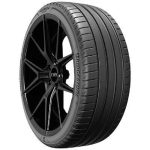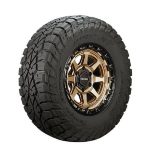Maintaining proper tire pressure is crucial for ensuring your vehicle’s safety, improving fuel efficiency, and enhancing the overall performance of your car. In this guide, we’ll walk you through the step-by-step process of how to fill car tires with air, helping you save money and extend the life of your tires.
Why Proper Tire Inflation Matters
Improved Fuel Efficiency
Under-inflated tires can significantly decrease fuel efficiency. When tires lack sufficient air, they create more rolling resistance, forcing your engine to work harder. Maintaining the correct pressure can improve your gas mileage, allowing you to travel further on each tank of gas.
Enhanced Safety
Driving on under-inflated tires can lead to blowouts and loss of control. Proper tire inflation ensures better traction, handling, and stability on the road. Regularly checking and maintaining your tire pressure can prevent accidents and keep you safe.
Extended Tire Lifespan
Tires that are consistently under or over-inflated wear unevenly, leading to premature wear and tear. By keeping your tires inflated to the manufacturer’s recommended pressure, you can extend their lifespan and save money in the long run.
Tools You’ll Need
Before you start filling your car tires with air, gather the following tools:

- Tire Pressure Gauge: To check the current pressure of your tires.
- Air Compressor or Tire Inflator: These can be found at gas stations or purchased for home use.
- Valve Stem Cap: Don’t forget to replace these after filling your tires.
Step-by-Step Guide on How to Fill Car Tires with Air
1. Check the Recommended Pressure
Start by locating the manufacturer’s recommended tire pressure for your vehicle. This information is typically found on a sticker inside the driver’s side door jamb or in your owner’s manual. Most passenger vehicles require a tire pressure between 30 and 35 PSI (pounds per square inch).
2. Measure Current Tire Pressure
Use your tire pressure gauge to check the current pressure of each tire. Simply remove the valve stem cap, press the gauge onto the valve stem, and read the measurement. Repeat this process for all four tires. If any of your tires are below the recommended pressure, it’s time to fill them.
3. Prepare the Air Compressor
If you’re at a gas station, locate the air compressor. Most stations have an automated system that accepts coins or card payments. If you’re using a home compressor, plug it in and ensure it’s set to the correct PSI.
4. Fill the Tires with Air
Now comes the filling process:
- Remove the Valve Stem Cap: Unscrew the cap from the tire you need to inflate and set it aside in a safe place.
- Attach the Air Hose: Firmly press the air hose nozzle onto the valve stem. You should hear air flowing into the tire.
- Check the Pressure: After a few seconds, detach the nozzle and use your tire pressure gauge to check the pressure again. Repeat this process until you reach the recommended PSI.
5. Replace the Valve Stem Cap
Once the tire is properly inflated, replace the valve stem cap to keep dirt and moisture out. Repeat this process for all tires that need air.
6. Recheck the Pressure
After filling all tires, recheck the pressure in each one to ensure they are consistent. This step is essential for maintaining balanced handling and performance.
Tips for Maintaining Proper Tire Pressure
Regular Checks
Make it a habit to check your tire pressure at least once a month, as well as before long trips. Weather changes can also affect tire pressure; colder temperatures can cause it to drop.
Invest in a Tire Pressure Monitoring System (TPMS)
Many newer vehicles come equipped with a TPMS, which alerts you when tire pressure is low. If your vehicle doesn’t have one, consider installing an aftermarket system for added convenience.
Don’t Forget the Spare Tire
While filling your car tires with air, don’t overlook your spare. Keeping your spare tire properly inflated ensures you’re prepared for emergencies.
Common Mistakes to Avoid
Over-Inflating Tires
It’s easy to get carried away when filling tires. Over-inflation can lead to a harsh ride and increased wear in the center of the tire. Always follow the manufacturer’s recommended pressure.

Neglecting Tire Maintenance
Filling your tires with air is just one part of tire maintenance. Regularly inspect your tires for wear, damage, and alignment issues.
Ignoring the Season
Tire pressure can fluctuate with temperature changes. Be sure to check your tire pressure more frequently during seasonal transitions, as cold weather can significantly reduce tire pressure.
Understanding Tire Pressure
What Causes Tire Pressure to Change?
Tire pressure can change for several reasons, primarily due to temperature fluctuations and the natural loss of air over time. Every 10°F drop in temperature can reduce tire pressure by about 1 PSI. This means that as the seasons change, you may need to check and adjust your tire pressure more frequently.
The Importance of Consistency
Maintaining a consistent tire pressure not only improves your driving experience but also contributes to better tire performance. Consistent pressure helps ensure even wear across the tread, which is vital for grip and handling. Over time, tires with inconsistent pressure can develop issues like bulging or sidewall damage.
Signs You Need to Fill Your Tires
Dashboard Warning Light
Many modern vehicles come equipped with a tire pressure monitoring system (TPMS) that will alert you if one or more of your tires is under-inflated. If you see this warning light on your dashboard, it’s crucial to check your tire pressure immediately.
Uneven Tire Wear
If you notice that your tires are wearing unevenly, it could be a sign that they are not inflated to the correct pressure. Tires should wear evenly across the tread surface. If they are worn more on one side, it may indicate improper inflation or alignment issues.
Poor Handling and Comfort
Driving on under-inflated tires can lead to a less comfortable ride. You might feel more bumps in the road, and your car may feel less stable during turns. If you notice a decline in handling performance, it may be time to check your tire pressure.
Additional Maintenance Tips
Rotate Your Tires Regularly
Regular tire rotation helps ensure even wear across all tires. Most manufacturers recommend rotating your tires every 5,000 to 7,500 miles, but always consult your owner’s manual for specific guidelines.

Alignment and Balancing
Having your wheels aligned and balanced helps maintain proper tire performance and longevity. Misalignment can cause your tires to wear unevenly and affect your vehicle’s handling. If your car pulls to one side while driving, it may be time for an alignment check.
Know When to Replace Tires
Tires don’t last forever. Be sure to check the tread depth regularly. A simple way to do this is the penny test: insert a penny into the tread with Lincoln’s head facing down. If you can see all of Lincoln’s head, it’s time to replace your tires.
Mastering Tire Maintenance: The Importance of Proper Air Pressure
Knowing how to fill car tires with air is a fundamental skill that every responsible driver should possess. Proper tire maintenance is crucial for ensuring optimal performance, safety, and fuel efficiency. By following these steps and checking your tire pressure regularly, you can contribute to a safer and more enjoyable driving experience.
By following these guidelines and prioritizing tire maintenance, you can ensure that your tires are in optimal condition, contributing to a safe and enjoyable driving experience.


